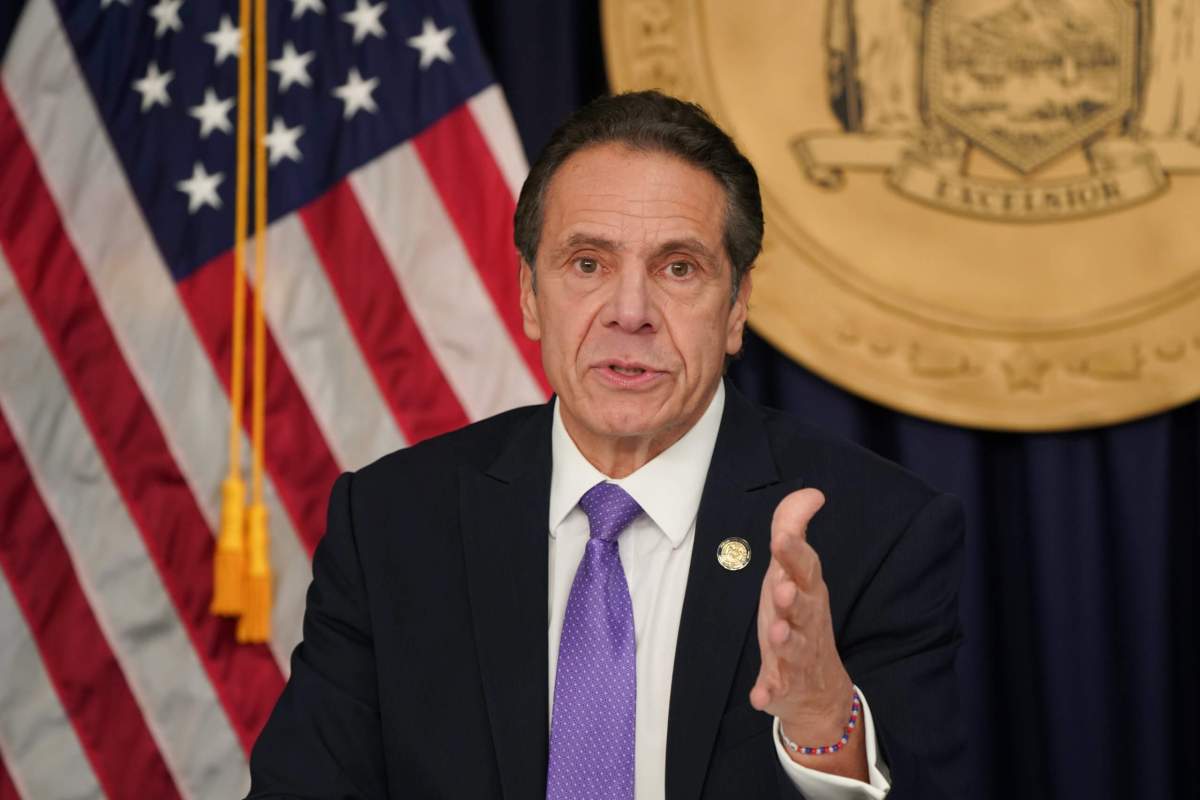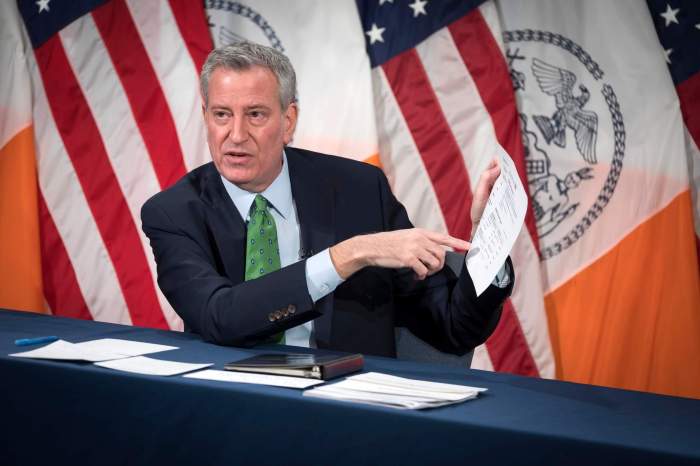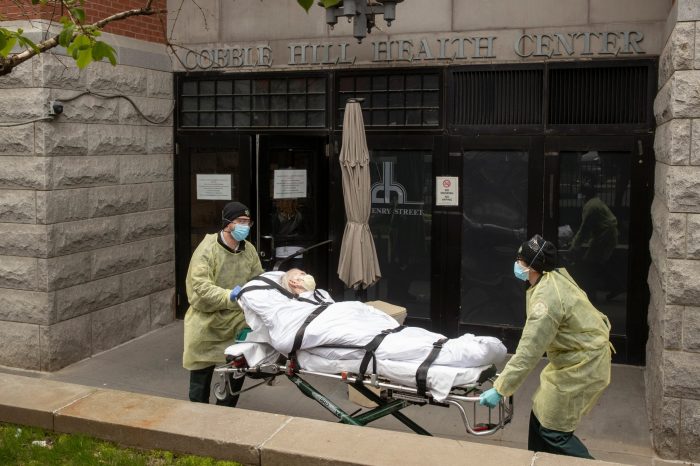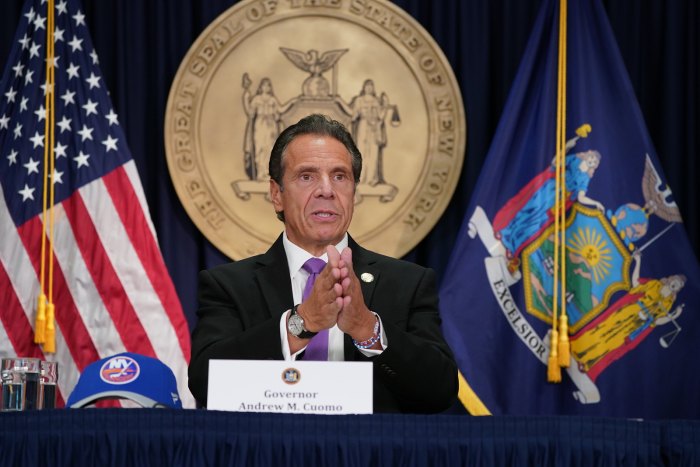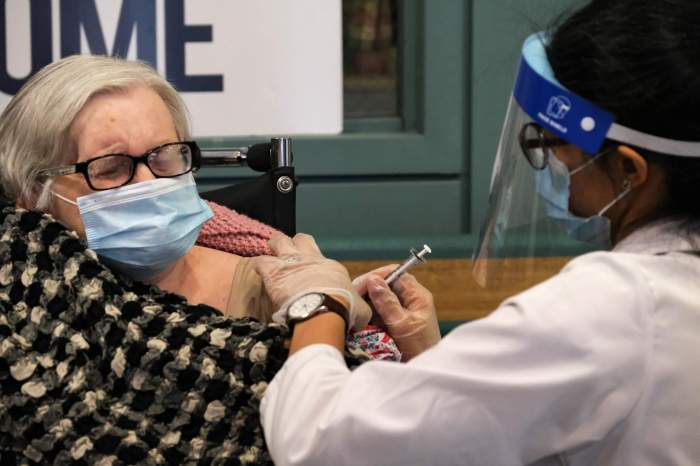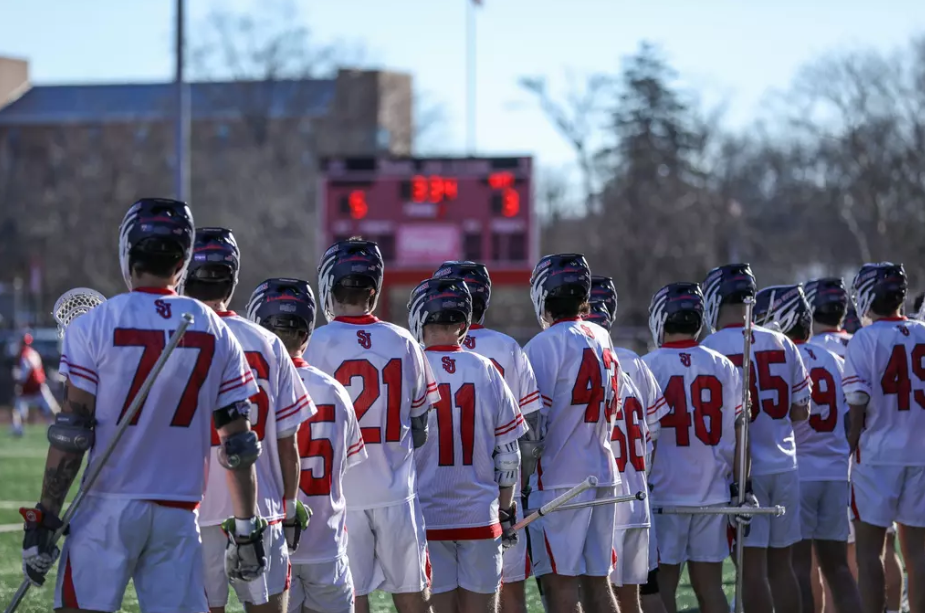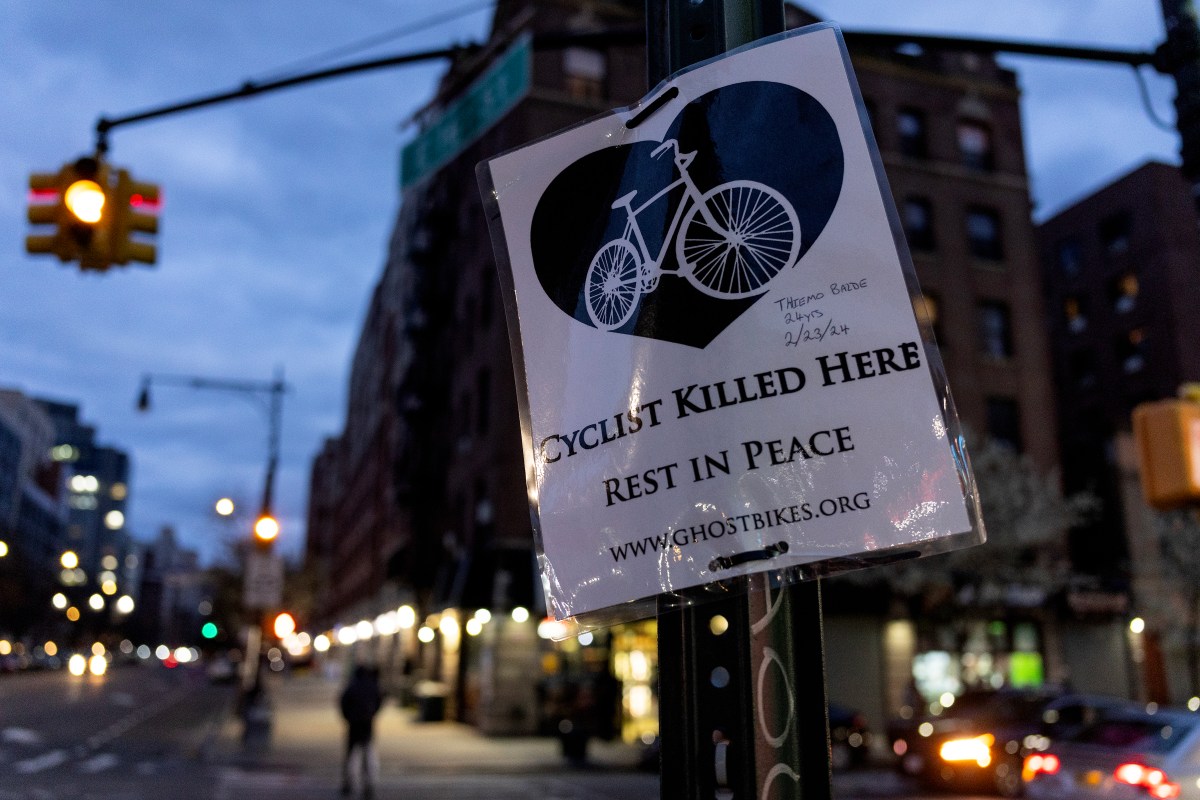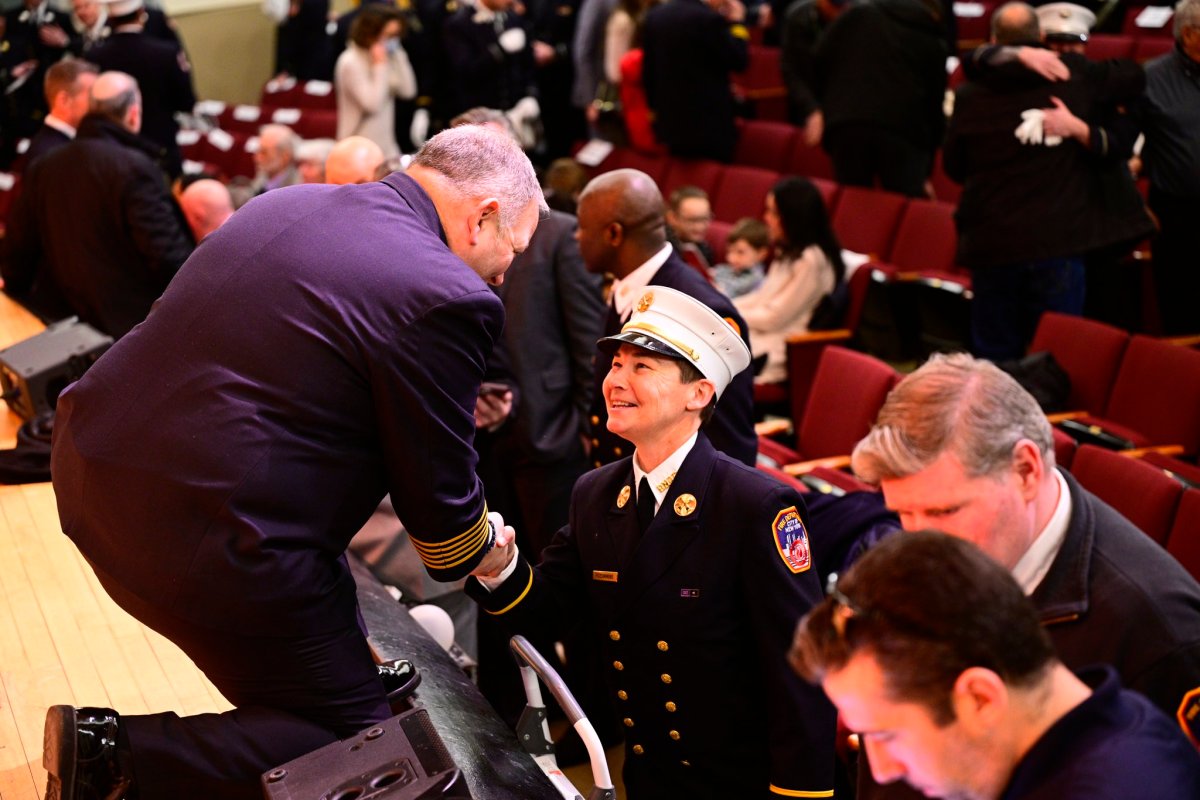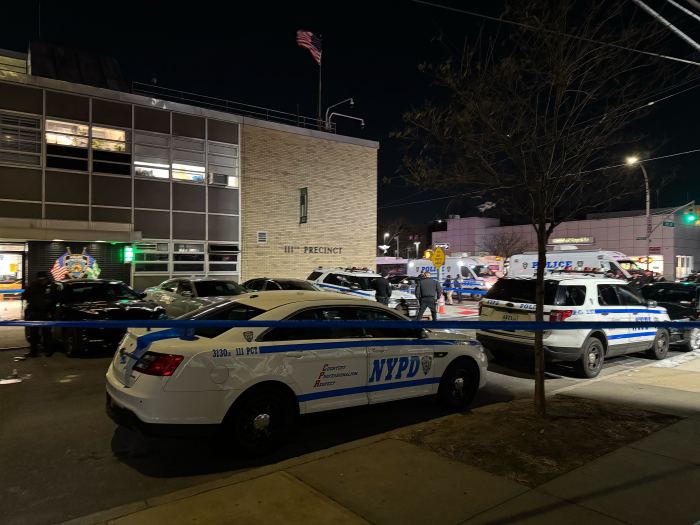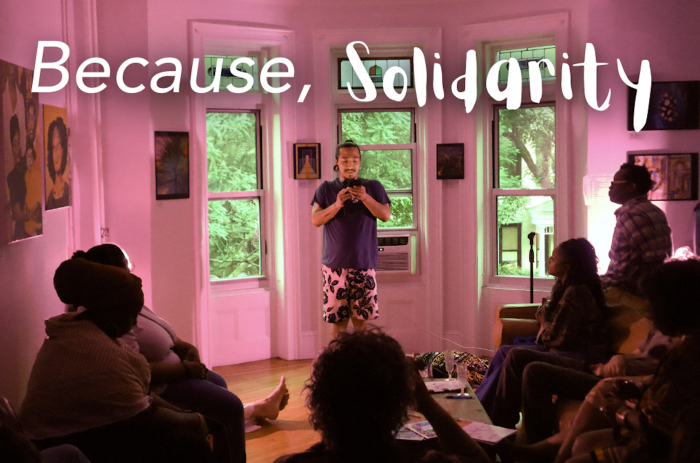Accusing his critics of “hurting New Yorkers by lying about what happened” in the state’s nursing homes, Governor Andrew Cuomo continued his fierce defense Friday of the way his administration handled the COVID-19 outbreak among the state’s elderly care facilities.
“You have no right to lie. You have no right to hurt people. I don’t care if it’s your politics, you can’t lie and cause pain to people who are innocent bystanders to all of this,” the governor said at a press conference on Feb. 19. “So I’m going to take on the lies, and the unscrupulous actors — especially when they cause pain and damage to New Yorkers. I should have done it before, and I should have done it more aggressively.”
Cuomo’s heated rhetoric marks the latest in an intensifying battle in Albany over the state’s actions with regards to nursing homes in the beginning of the pandemic — and the subsequent effort by legislators to get a full understanding of the impact the virus had on those facilities.
The controversy hit a fever pitch in January, when state Attorney General Letitia James issued a damning report suggesting that the Cuomo administration had undercounted the number of deaths in nursing homes and long term care facilities by at least 50%.
Since then, the state’s Department of Health has updated their publicly released numbers — from around 8,500 to over 15,000 deaths.
Much of the discrepancy between the original and newly-reported numbers stem from the state’s decision not to include nursing home deaths that occurred outside of the facilities, such as in hospitals — even if the infection occurred inside the nursing homes.
‘Another slap in the face’
Now, many of Cuomo’s critics have blasted the governor’s omission, accusing him of hiding the numbers in an effort to keep the number of deaths artificially low.
“The governor and his administration knowingly chose to lie and play politics with New Yorkers’ lives,” said Queens state Senator Jessica Ramos in a statement. “This news is another slap in the face to the many New Yorkers still grieving the loss of their loved ones across our state.”
That was backed up Friday with Bronx/Queens Congresswoman Alexandria Ocasio-Cortez supporting an investigation, and Brooklyn City Councilman Carlos Menchaca going as far as to call for Cuomo’s resignation.
For his part, Cuomo has claimed that his administration “delayed” a request by state legislators to provide information on nursing home deaths because the United States Department of Justice had issued a similar request, and his administration gave preference to the feds’ request.
“We said we would pause the state legislature’s request, because we gave DOJ precedence,” he said on Friday. “We paused the state’s request, and we told them that we paused the state’s request. They were told, and they knew.”
Political motives
Adding to Cuomo’s defensiveness, he also suggested that the DOJ’s August 2020 probe was a political attack pushed by former President Donald Trump, as only Democratic-governed states were targeted in the investigation.
“Nursing home deaths happened nationwide — Democratic states, Republican states. [But] we get a request letter from the Department of Justice on the same day, just Democratic governors. Okay, I guess that was coincidental. I guess that wasn’t political by the Trump Justice Department,” he said, sarcastically.
Cuomo’s claim, however, that his administration had informed the state legislature that their request was taking a back seat to the DOJ probe drew widespread condemnation from many of New York’s elected officials — including Ramos, who did not mince words on Twitter.
Liar, liar, pants on fire 🔥 https://t.co/VZJYnfh9nR
— Jessica Ramos (@jessicaramos) February 19, 2021
On Thursday, one day before Cuomo’s remarks, the New York Law Journal reported that both the U.S. Attorney’s Office and the FBI had launched a probe into the state’s COVID-19 task force.
Now, a bipartisan group of state legislators are looking to strip Cuomo of the emergency powers granted to him at the onset of the pandemic, with a vote loosely scheduled for next week — a proposal that drew praise from Ocasio-Cortez.
“I support our state’s return to co-equal governance and stand with our local officials calling for a full investigation of the Cuomo administration’s handling of nursing homes during COVID-19,” she said in a statement on Friday. “Thousands of vulnerable New Yorkers lost their lives in nursing homes throughout the pandemic. Thor loved ones and the public deserve answers and transparency from their elected leadership.”
Brooklyn State Senator Andrew Gounardes took to social media to announce his support for stripping Cuomo’s emergency powers.
“The legislature is a co-equal branch of state government and it’s time for us to reassert checks and balances over the governor’s broad emergency powers,” he wrote on Twitter. “We must ensure the legislature is included in decision-making processes, as well as reassert our oversight responsibilities.”
Another state pol who expressed support for reining in Cuomo’s authority, Queens Assemblyman Ron Kim, found himself the target of the governor’s ire earlier this week, when Cuomo, seemingly out-of-the-blue, accused Kim of engaging in a pay-to-play political scheme involving nail salon businesses.
In defending himself in a Wednesday afternoon statement, Kim shot back at the governor’s “fatally incompetent management.”
“The governor can smear me all he wants in an effort to distract us from his fatally incompetent management. But these facts are not going away, because they are the facts — unacceptable facts that hold him accountable,” Kim said.
Zucker defends the order
At the center of Cuomo’s alleged mismanagement of COVID-19 in nursing homes, his critics charge, was a March 25 executive order to send COVID-19 patients into nursing homes — which led to several outbreaks inside the facilities, where residents are particularly vulnerable due to their age.
Joining Cuomo’s Friday press conference, however, New York State Health Commissioner Dr. Howard Zucker defended the order, saying it was the right decision at the time.
“You can only review the decision with the facts that you had at the time. With the facts that we had at that moment in time, it was the correct decision from a public health point of view,” Zucker said.
In an effort to free up hospital beds and flatten the curve “to protect the hospital system as a whole,” the state health guidance was designed to “send people home if they didn’t need to be in the hospital,” Zucker said — which led officials at the time to send COVID-positive patients back to nursing homes.
Additionally, the commissioner added, studies have shown that many of the COVID-19 outbreaks in nursing homes were caused by asymptomatic staff members.
“98% of the nursing homes that accepted a hospital patient, already had COVID in that facility,” Zucker said. “132 nursing homes facilities that never took a COVID admission from a hospital still had COVID fatalities.”
Cuomo also argued that the “rate of COVID deaths in nursing homes was the same before the March 25 memo, as it was after” — and other states which did not have similar policies still had similar rates of infection in nursing homes.
Still, even with Zucker’s defense of the state’s actions, many politicos have trained their outrage at Cuomo’s alleged lack of transparency around the number of nursing home deaths.
One of the governor’s predecessors, former Governor George Pataki, called Cuomo’s actions a “cover-up” and “one of the worst things I have seen in state government,” during an interview on AM 570 WMCA radio.
Reopening for visits
Over the next several weeks, the debate over both Cuomo’s handling of nursing homes, and the subsequent reporting, will surely heat up even further — with multiple investigations, legislative hearings, and a bipartisan push to limit Cuomo’s authority.
And yet, amid the controversy and in between his staunch efforts at defense, Cuomo also announced on Friday that long term care facilities can reopen for visitations — allowing many families to see their elderly loved ones for the first time in nearly a year.
“Reopening visitation — this is going to be a very big deal for a lot of New Yorkers,” the governor said.
The move comes nearly two months after the COVID-19 vaccines began rolling out to nursing home residents and the support staff, and as nearly three-fourths of all residents and staffers have been inoculated.
“100% of nursing home residents and staff have been offered the vaccine, and 73% of them have been vaccinated,” Cuomo said. “That is the largest ‘sub-group,’ if you will.”



